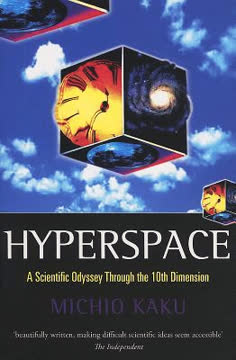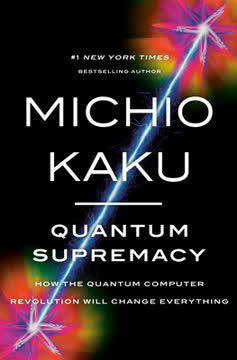Key Takeaways
1. The quest for a unified theory of everything has driven physics for centuries
"It was to be the final theory, a single framework that would unite all the forces of the cosmos and choreograph everything from the motion of the expanding universe to the most minute dance of subatomic particles."
Historical context. The search for a unified theory dates back to ancient Greece, where philosophers sought to explain the world through fundamental elements. This quest continued through Newton's laws of motion and gravity, which laid the groundwork for the Industrial Revolution. The 19th century saw Maxwell unify electricity and magnetism, leading to the electric age.
Modern developments. The 20th century brought two revolutionary theories:
- Einstein's relativity, explaining gravity and the cosmos
- Quantum mechanics, describing the subatomic world
These theories, while incredibly successful in their domains, remain incompatible. The holy grail of physics is to find a single theory that unifies all four fundamental forces: gravity, electromagnetism, the strong nuclear force, and the weak nuclear force.
2. Einstein's theories of relativity revolutionized our understanding of space, time, and gravity
"To Einstein, however, time was more like a river. It could speed up or slow down as it meandered its way across stars and galaxies."
Special relativity. Einstein's 1905 theory showed that:
- The speed of light is constant for all observers
- Time slows down for objects moving at high speeds
- Mass and energy are equivalent (E = mc²)
General relativity. In 1915, Einstein extended his theory to include gravity:
- Gravity is the curvature of spacetime caused by massive objects
- This explains phenomena like:
- The bending of light around stars
- The precession of Mercury's orbit
- The existence of black holes
General relativity has been confirmed by numerous observations, including the detection of gravitational waves in 2015.
3. Quantum mechanics revealed the probabilistic nature of subatomic particles
"Einstein wrote that 'the more successful the quantum theory becomes, the sillier it looks.'"
Core principles. Quantum mechanics, developed in the 1920s, describes the behavior of matter and energy at the atomic and subatomic scales:
- Particles can exist in multiple states simultaneously (superposition)
- The act of measurement affects the outcome (observer effect)
- Particles can be entangled, influencing each other instantaneously across distances
Philosophical implications. These principles challenge our intuitive understanding of reality:
- Is the universe fundamentally probabilistic?
- Does consciousness play a role in shaping reality?
- Are there multiple universes where all possible outcomes occur?
Despite its counterintuitive nature, quantum mechanics has been incredibly successful in explaining phenomena and enabling technologies like lasers and transistors.
4. The Standard Model unifies three of the four fundamental forces, but gravity remains elusive
"So gradually, a new theory was emerging from all this chaos, called the Standard Model."
Components. The Standard Model, developed in the 1970s, describes all known elementary particles and three of the four fundamental forces:
- Particles:
- Quarks (6 types)
- Leptons (including electrons and neutrinos)
- Bosons (force-carrying particles)
- Forces:
- Strong nuclear force (binds quarks)
- Weak nuclear force (radioactive decay)
- Electromagnetic force
Successes and limitations. The Standard Model:
- Accurately predicts particle interactions
- Led to the discovery of the Higgs boson in 2012
- Does not include gravity
- Requires many arbitrary parameters
- Cannot explain dark matter or dark energy
5. String theory proposes a radical new framework to unify all forces and particles
"String theory was like an oil well suddenly gushing forth a torrent of new equations."
Core concept. String theory proposes that all particles and forces are actually vibrations of tiny, one-dimensional strings:
- Different vibration modes correspond to different particles
- Requires 10 or 11 dimensions (most are "curled up" and invisible)
- Naturally includes gravity, unlike the Standard Model
Challenges. Despite its elegance, string theory faces significant hurdles:
- No experimental evidence yet
- Extremely high energies required for direct testing
- Multiple versions of the theory (unified by M-theory)
- Predicts a vast "landscape" of possible universes
String theory remains highly controversial, with critics arguing it's untestable and supporters believing it's the most promising path to a unified theory.
6. The theory of everything may explain the origins and fate of the universe itself
"Perhaps our universe originally came from quantum fluctuations in Nothing."
Cosmological implications. A true theory of everything would have profound consequences for our understanding of the cosmos:
- Origin of the universe:
- Explaining the Big Bang
- Possible existence of a multiverse
- Evolution of the universe:
- Inflation and expansion
- Formation of galaxies and large-scale structure
- Fate of the universe:
- Ultimate destiny (Big Freeze, Big Crunch, or Big Rip)
- Possibility of cyclic universes
Unresolved questions. Key mysteries a unified theory might address:
- Nature of dark matter and dark energy
- Existence of other dimensions or universes
- Possibility of time travel or wormholes
7. Understanding the cosmos raises profound questions about meaning and existence
"The question of all questions for humanity, the problem which lies behind all others and is more interesting than any of them, is that of the determination of man's place in Nature and his relation to the Cosmos."
Philosophical implications. The search for a theory of everything inevitably leads to deep existential questions:
- Does the universe have a purpose or design?
- Is there a role for a creator or God in the cosmos?
- How do we find meaning in a potentially finite universe?
Scientific perspective. While science cannot directly answer these questions, it provides a framework for contemplation:
- The anthropic principle suggests our universe is fine-tuned for life
- The multiverse theory proposes countless universes with different properties
- The vastness and beauty of the cosmos inspire awe and wonder
Ultimately, the pursuit of a unified theory is not just about understanding the physical world, but about our place within it and the nature of existence itself.
Last updated:
FAQ
What's "The God Equation: The Quest for a Theory of Everything" about?
- Unified Theory Goal: The book explores the quest for a single framework that unites all the forces of the universe, from the motion of galaxies to subatomic particles.
- Historical Journey: It traces the history of physics, from ancient dreams of unification to modern string theory, highlighting key scientific revolutions.
- String Theory Focus: The narrative centers on string theory as the leading candidate for a theory of everything, explaining its potential to unify gravity with quantum mechanics.
- Philosophical Implications: The book also delves into the philosophical questions about the universe's origin, structure, and meaning.
Why should I read "The God Equation: The Quest for a Theory of Everything"?
- Comprehensive Overview: It provides a thorough overview of the history and current state of theoretical physics, making complex ideas accessible.
- Scientific Insight: Readers gain insight into the minds of great physicists like Einstein and Hawking and their contributions to the quest for unification.
- Philosophical Exploration: The book addresses profound questions about the universe's purpose and the existence of a grand design.
- Engaging Narrative: Michio Kaku's engaging writing style makes the intricate world of physics both understandable and fascinating.
What are the key takeaways of "The God Equation: The Quest for a Theory of Everything"?
- Unification Dream: The pursuit of a unified theory has been a long-standing goal in physics, aiming to explain all natural forces with a single equation.
- String Theory's Role: String theory is currently the most promising candidate for a theory of everything, proposing that the universe is made of tiny vibrating strings.
- Challenges and Criticisms: Despite its potential, string theory faces significant challenges, including lack of experimental evidence and the landscape problem.
- Philosophical Questions: The book raises questions about the universe's origin, the possibility of a multiverse, and the role of a creator or grand design.
How does Michio Kaku explain string theory in "The God Equation"?
- Vibrating Strings Concept: Kaku explains that string theory posits the universe is composed of tiny, vibrating strings, with each vibration corresponding to a different particle.
- Dimensionality: The theory suggests that the universe has ten dimensions, with six of them curled up and unobservable at our scale.
- Inclusion of Gravity: Unlike other theories, string theory naturally includes gravity, making it a strong candidate for unifying all forces.
- Supersymmetry: The theory incorporates supersymmetry, which posits a symmetry between particles that make up matter and those that mediate forces.
What are the main criticisms of string theory according to "The God Equation"?
- Lack of Testability: Critics argue that string theory is difficult to test experimentally, as it requires energies far beyond current capabilities.
- Infinite Solutions: The theory predicts a multiverse with an infinite number of solutions, making it hard to determine which one describes our universe.
- Complexity and Elegance: While mathematically elegant, some physicists question whether beauty alone is a reliable guide in physics.
- Anthropic Principle: The reliance on the anthropic principle to explain why our universe is special is seen as unsatisfactory by some scientists.
What is the significance of the "God Equation" in Michio Kaku's book?
- Ultimate Goal: The "God Equation" refers to the ultimate equation that would unify all physical laws, explaining everything from the Big Bang to subatomic particles.
- Einstein's Dream: It represents the culmination of Einstein's quest for a unified field theory, a pursuit that has driven physicists for over a century.
- String Theory's Promise: String theory is seen as the closest approach to achieving this equation, with its potential to unify gravity and quantum mechanics.
- Philosophical Implications: The equation raises questions about the universe's design, purpose, and the existence of a creator.
How does "The God Equation" address the concept of a multiverse?
- Inflation Theory: The book discusses how inflation theory suggests our universe is one of many bubbles in a larger multiverse.
- String Theory's Landscape: String theory's landscape problem implies an infinite number of possible universes, each with different physical laws.
- Philosophical Questions: The multiverse concept challenges traditional notions of a single, unique universe, raising questions about our place in the cosmos.
- Anthropic Principle: The existence of a multiverse is used to explain why our universe appears fine-tuned for life, as we exist in one of the few universes where life is possible.
What are the best quotes from "The God Equation" and what do they mean?
- "The universe is a symphony of strings." This quote encapsulates the essence of string theory, suggesting that all particles and forces are manifestations of vibrating strings.
- "Did God have a choice in creating the universe?" This question, posed by Einstein, reflects the search for a unique, inevitable set of physical laws governing the universe.
- "Sometimes God throws the die where you cannot find them." Hawking's quote highlights the uncertainty and unpredictability inherent in quantum mechanics, especially in black holes.
- "Beauty is truth, truth beauty." This Keats-inspired sentiment underscores the belief that the universe's fundamental laws are both beautiful and true, guiding physicists in their quest.
How does Michio Kaku address the philosophical implications of a theory of everything?
- Existence of God: Kaku explores whether a theory of everything implies a grand design or creator, considering both scientific and theological perspectives.
- Meaning of Life: The book raises questions about whether understanding the universe's fundamental laws can provide insight into life's purpose and meaning.
- Human Understanding: Kaku suggests that a complete theory should be understandable by everyone, allowing all to participate in discussions about existence.
- Limitations of Science: He acknowledges that some questions, like the origin of the laws themselves, may remain beyond the reach of science, entering the realm of metaphysics.
What role does symmetry play in "The God Equation"?
- Unifying Principle: Symmetry is a central theme, seen as the key to unifying all forces and particles in the universe.
- Predictive Power: Symmetry helps predict new particles and phenomena, as seen in the discovery of antimatter and quarks.
- Eliminating Infinities: In string theory, supersymmetry helps cancel out infinities that plague other quantum theories, making it a candidate for a finite theory of gravity.
- Aesthetic Appeal: Symmetry is also associated with beauty in physics, guiding the search for elegant and simple explanations of complex phenomena.
How does "The God Equation" explain the relationship between quantum mechanics and general relativity?
- Conflicting Theories: The book highlights the fundamental conflict between quantum mechanics, which governs the small, and general relativity, which governs the large.
- String Theory's Promise: String theory offers a framework to reconcile these two theories by describing particles as strings, naturally incorporating gravity.
- Quantum Gravity: The quest for a theory of quantum gravity aims to unify these theories, explaining phenomena like black holes and the Big Bang.
- Experimental Challenges: Despite theoretical progress, testing the unification of these theories remains a significant challenge due to the high energies required.
What is Michio Kaku's perspective on the future of string theory?
- Ongoing Evolution: Kaku believes string theory is still evolving, with new mathematical layers being uncovered, suggesting it is not yet in its final form.
- Mathematical Consistency: He argues that the theory's ultimate validation may come from its mathematical consistency and ability to derive known physical constants.
- Experimental Hopes: While direct experimental evidence is challenging, Kaku remains hopeful that future discoveries, like dark matter or mini black holes, may support the theory.
- Patience Required: He emphasizes that scientific progress can be slow, and the ultimate understanding of string theory may take time, much like past scientific revolutions.
Review Summary
The God Equation receives mixed reviews, with praise for its accessible overview of physics history and string theory, but criticism for its brevity and lack of depth. Some readers appreciate Kaku's clear explanations and philosophical musings, while others find the content superficial and misleading. The book's use of "God" in the title is controversial. Reviewers note that much of the material is familiar from other popular physics books, with limited new insights. The final chapters on string theory and its implications are considered the most interesting, albeit too brief.
Similar Books
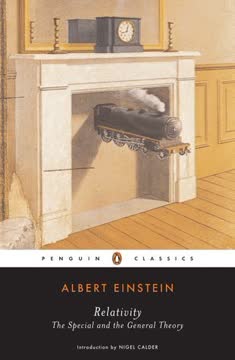



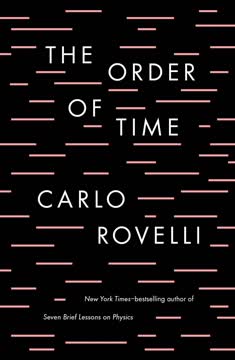
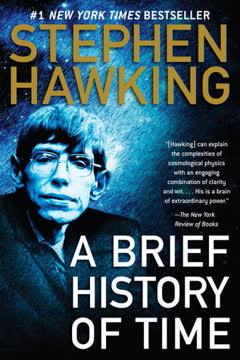

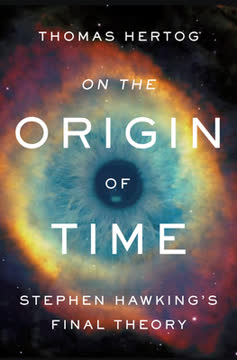
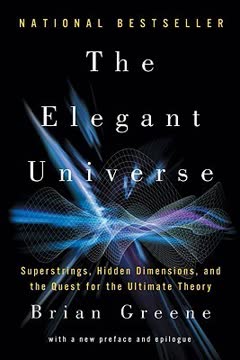
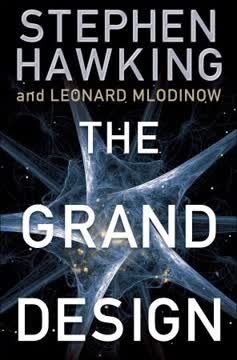
Download PDF
Download EPUB
.epub digital book format is ideal for reading ebooks on phones, tablets, and e-readers.


